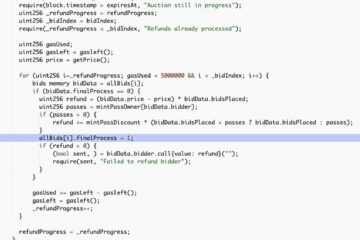Ethereum – Through Technology

Do our computer pundits lack all common sense? The truth is no online database will replace your daily newspaper, no CD-ROM can take the place of a competent teacher and no computer network will change the way government works.
“Why the Web Won’t Be Nirvana” – 1995 article of Newsweek.
Are you on the this doesn’t matter side? You don’t want to be that wrong. You need to know about the blockchain that is updating our economy. I will show you a key blockchain: the Ethereum platform.
Ethereum unlocks a new world of opportunities and new developments that most people still doesn’t understand or doesn’t even know. Those opportunities and infrastructure that’s being developed will change the world in several ways.
Not understanding what that means or what is going to come powered by Ethereum will keep you behind. I will show you what is Ethereum, how it works and its major applications.
What is Ethereum
Ethereum is a blockchain-based platform where the transactions can be performed based on smart contracts.
Smart contracts are a special type of transaction, made of pieces of software tied to a cryptocurrency called Ether, the Ethereum currency. They allow to perform transactions based on inputs and logic conditions.
Smart contract example: If Tom doesn’t send me 5 ETH before 1st of April, then send Geroge 6 ETH on 1st of May.
Smart contracts live in the Ethereum Virtual Machine (EVM). The EVM is the system based on blockchain that contains the contracts, transactions and states. It’s taking the ledger concept of the Bitcoin to another level. Now instead of just having a ledger with transactions, Ethereum has a state machine based on variables and conditions. It’s called virtual machine because it resembles to a single computer as all nodes reach a consensus of an unique state.
By sending transactions to the EVM, the state machine is updated, executing smart contracts and including those new transactions into the EVM. Ethereum is in some way, a distributed global computer.
To control the execution of code, a gas fee is payed to compensate blockchain miners and avoid abuse of the network. Fees are set by blockchain miners according to offer and demand, regulating the availability of the computing power.
Blockchain technology provides immutable, secure, decentralized and trustless1 transactions. Smart contracts adds a new capability to the mix: complex transactions based on code.
This design allows to generalize the use of blockchain for new use cases. Custom code in the smart contracts allows users to perform complex transactions. It also allows developers to build applications on top of the Ethereum platform.
What is special of these contracts is that as the blockchain is a trustless and decentralized network, both parties can trust that the contracts executed into it will be respected without having to trust each other. The blockchain operates as a neutral intermediate.
We could say that the main difference with Bitcoin is that Ethereum besides performing currency transfers from one account to another can also perform smart contracts. Smart contracts are not unique to Ethereum even though is the one that has popularized it and the most popular one. Other cryptocurrencies like Solana implement their own smart contract system.
Major Ethereum applications
There are three categories of applications that are possible with this kind of technology:
Decentralized Finance (DeFi)
Decentralized finance is the immediate application that you can think of when discovering this system. As you have a secure trustless autonomous system to perform currency contracts between individuals without middleman, you can start making financial operations by yourself by signing smart contracts in a peer to peer basis.
This way, there’s a system that can mostly replace banks and financial institutions. I see DeFi having similar impact as the invention of the printing. Suddenly there’s a big workforce left out by leveraging printers. Society didn’t need scribes anymore.
Non Fungible Tokens (NFT)
Non fungible tokens (NFTs) are the way to represent unique assets in the blockchain. They’re created using a kind of smart contract. NFTs creates virtual scarcity, uniqueness and proof of ownership. These qualities were not present before in virtual world.
Some examples of NFTs:
- Digital art
- Music
- Tickets
- Participation tokens
- Essays
- Books
Basically anything natively digital can be tokenized. There are some experiments binding real life objects with a virtual representation as an NFT. See beeple collectibles and RTFKT sneakers.
NFTs are exploding among the digital art and collectibles sector. You can check marketplaces like opensea.io to see some samples. Copyright institutions have fought for decades to fight for prevalence of copyrights over the internet, this invention seems like the closest solution.
Decentralized Autonomous Organizations (DAO).
DAOs are a new type of organization that is enabled by the blockchain. It’s a organization collectively owned and managed by its members.
They use tokens as vote mechanism and smart contracts as policies, this way the organization can take decisions based on token votes. Those decisions could be even changing their operating policy.
Also, they are transparent as all their transactions and contracts are public. Their funds can be checked by anyone. Members and their reputation (based in tokens) are public but they could be pseudonymous. This organization model will be useful for open source organizations and other kinds of NGO even though they could be used for any kind of organization.
The most popular one right now is the MakerDAO. It manages the DAI stablecoin.
The future enabled by smart contracts
As you have seen, Ethereum platform and smart contracts are enabling new possibilities that can potentially impact heavily in how our society is structured, how it operates and can create new economies based on them.
DeFi is already exploding and will destroy lots of financial jobs and institutions turning them into pieces of reusable code. NFTs have already break an all time record of 69 million dollars for digital art. Digital creation is already bigger than physical, so the NFTs potential is incredible. I think DAOs still need some more time but I don’t see why this can’t be another mainstream organization system. Some people think that DAOs will become digital states!
Ethereum official webpage – https://ethereum.org/
1 We say a system is trustless when no trust is required to operate in it. You don’t need to trust anyone because the system can’t be compromised or manipulated. In blockchains this is achieved by decentralization and with a consensus mechanism.


